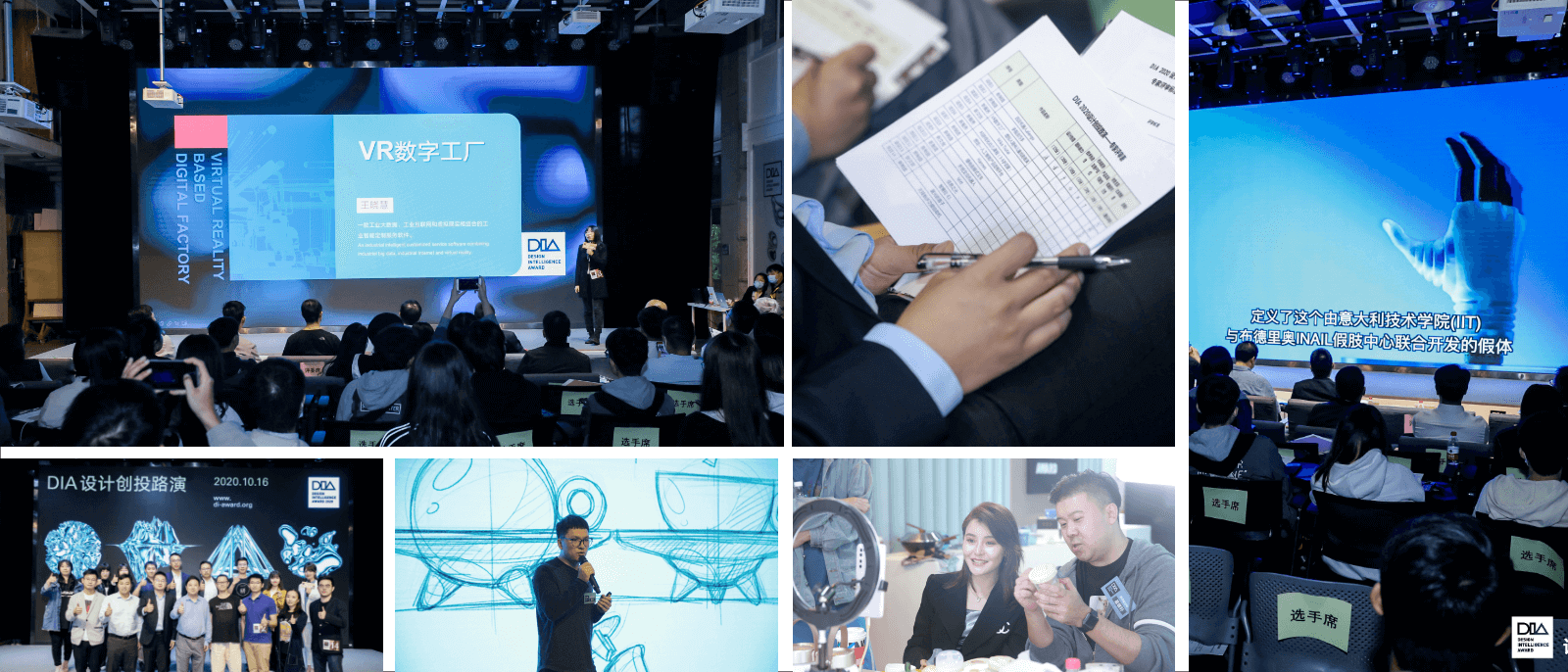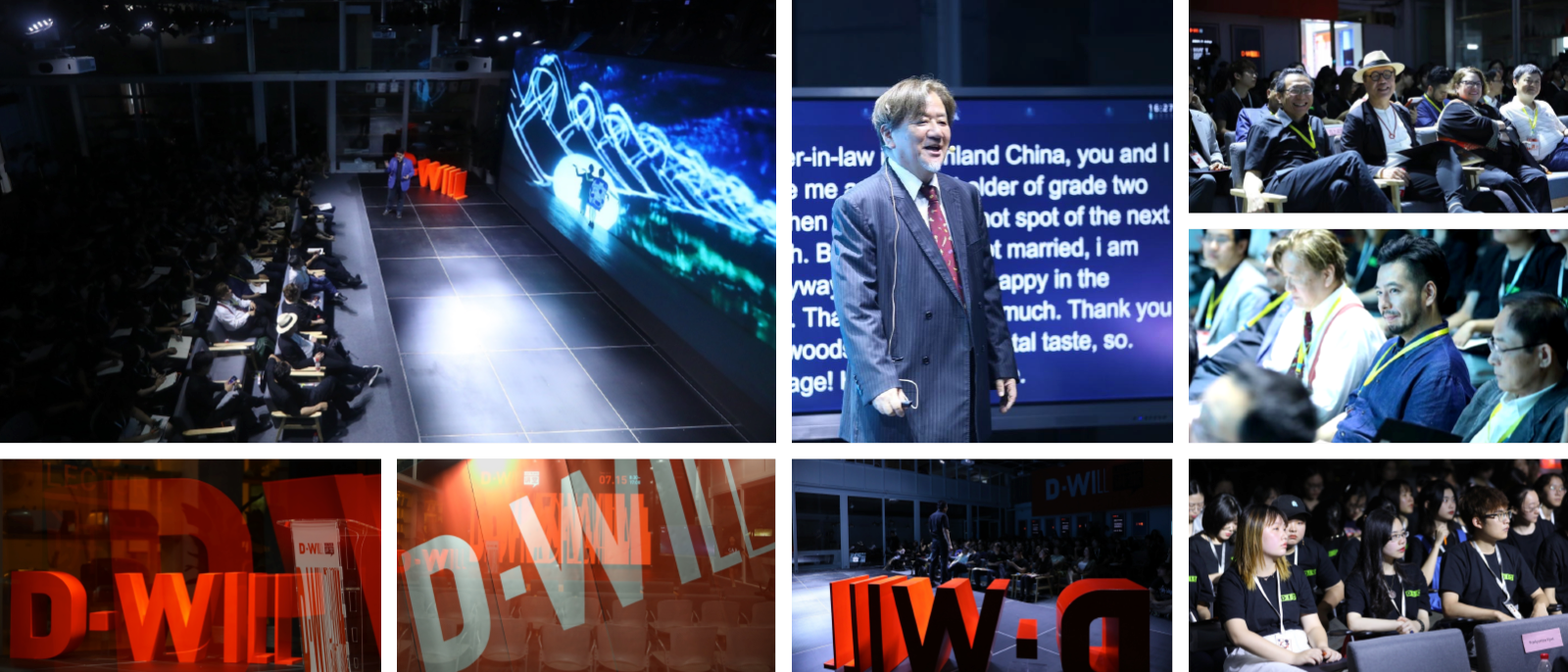
- What is DIA
- Who is DIA for
- What are the key benefits
- Experts
- Process
- Evaluation criteria
- Organizational structure
WHAT IS DIA AND WHO CAN ATTEND
What is DIA
The Design Intelligence Award (DIA) is an international competition connecting cultures through design. It gathers a global community of entrepreneurs, creatives and innovators who tackle society's biggest challenges.
The DIA is one of the newest and most prestigious international academy award in design that was founded in 2015 by the China Academy of Art in partnership with several other organizations.
The DIA recognizes innovative, forward-thinking, and sustainable design solutions that address real-world problems and improve people's lives.

In October, 2014, Li Qiang, the then Governor of Zhejiang Province, and Xu Jiang, the then Principal of China Academy of Art, put forward the idea of setting up an international “Academy Award” of industrial design, and decided to be hosted by China Academy of Art.

On January 8, 2016, Yuan Jiajun, the then Executive Vice Governor of Zhejiang Province, announced the launch of Design Intelligence Award(DIA).
Who is DIA for
The DIA welcomes submissions from people, teams and organizations around the world who have created exceptional, innovative and sustainable design solutions.
The DIA recognizes, honors and celebrates the achievements of designers who excel in various fields. The competition is open to anyone in the design industry, no matter what their background or discipline.
WHAT ARE THE KEY BENEFITS
Free
No application fee is charged for registration and promotion.
Expanding
DIA supports your team and organization to enter China's fast-growing market. Through experts advice, you can boost your trade and access to Asian markets.

Prize
The DIA offers substantial cash prizes to its winners, which can help to fund new projects, research, or other activities. The total bonus is ¥5,000,000.00 (equivalent to around $726,000.00), which will be distributed to 30 outstanding works. The gold winner would get as much as ¥1,000,000.00 alone.
All the award winners will receive a trophy and a certificate. Those winners whose physical works are displayed in the annual DIA Exhibition will also receive a DIA Exhibition Certificate. Those winners whose works are donated to DIA Committee will receive DIA Collection Certificate.

Protection
Start with DIA to protect your idea and project in China. Benchmark yourself against the world's finest to inform future plans.
Community
DIA connects you to a global innovation community, where you can collaborate with other designers and learn from experts. You might even be able to find a job or get feedback on your designs. Even if you don't win an award, participating in the competition can help you grow as a designer.
Promotion
The DIA promotes its winners and finalists through a variety of channels, including online and offline media, exhibitions, and publications. This can help to raise the profile of a designer's work and attract new clients and customers.

All winners will be invited to participate in DIA Ceremony and other series of activities, and to engage in face-to-face exchanges and cooperation with representatives globally from various industries such as design, academic circles and media, etc. At the same time, they will have the opportunity to be the speakers of “D·WILL” Lectures.

DIA, together with more than one hundred of mainstream media, has established a global promotion network covering a variety of industries and channels.
WHO ARE THE EXPERTS
Experts
DIA experts are a diverse group from around the world who are recognized for their expertise in design.
The expert panel consists of 550 experts and judges from 37 countries and regions, including designers, heads of design organizations, curators, editors-in-chief of design magazines, design museum experts, professors of design colleges and enterprise executives.
Each year, the DIA selects a new panel of experts and judges to evaluate submissions for the award.

HOW IS EVALUATION DONE
Process
The Design Intelligence Award (DIA) follows a rigorous evaluation process to ensure that the winning designs are truly exceptional and innovative. Here is a general overview of the evaluation process:
1. Submission and Preliminary Evaluation: Designers and design teams can submit their work to the DIA through the official website. The submissions are then evaluated by a preliminary review committee to ensure that they meet the basic eligibility requirements.
2. Professional Evaluation: After the preliminary evaluation, the submissions are reviewed by a panel of professional experts in the relevant design fields. These experts evaluate the submissions based on a set of criteria, including innovation, functionality, aesthetics, and social and environmental responsibility. The experts also provide feedback and suggestions for improvement.
3. Jury Evaluation: The submissions that pass the professional evaluation stage are then reviewed by a jury made up of renowned designers, design educators, and design industry executives. The jury evaluates the submissions based on the same criteria used in the professional evaluation stage, as well as the potential market value and feasibility of the designs.
4. Final Selection: Based on the results of the jury evaluation, the DIA selects the winning designs. The winners are announced at an awards ceremony and exhibition, and their designs are featured in various publications and media outlets.
Evaluation criteria
The DIA evaluates all entries using the Pyramid scorecard, which is based on three criteria:
1. The « Fundamental Layer » emphasizes the Design Principles: functionality, aesthetics, technicality and sustainability. The submitted designs are evaluated on how well they embody these principles and how they integrate them into the solution.
2. The « Advanced Layer » emphasizes the Design Direction: how the project contributes to humanity, industry and the future? The submitted designs are evaluated based on how they address emerging trends and reflect cultural values.
3. The « Top Layer » emphasizes the Design Impact: how the project affects society and industry? The submitted designs are evaluated based on their ability to create social value and economic benefit.
Organizational structure
Supporting Unit:
The People's Government of Zhejiang Province
Host:
China Academy of Art
Co-organizer:
China Industrial Design Association / Steering Sub-committee on the Teaching of Industrial Design in Higher Educational Institutions under the Ministry of Education
Organizer:
Design Intelligence Award Committee
News
Subscribe
Copyright © 2024 Design Intellgence Award . All rights
reserved

